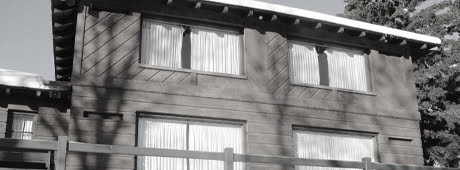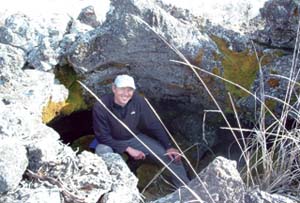No products in the cart.
Mary’s Place

Is She Still There?
Story and Photos by Mike Medberry
Inside the Hemingway House in Ketchum, I stared past my guide Kelley at a wisp of hair, a body, and a face that peeked out from a corner. The image disappeared.
“What was that?” I interrupted her description of the many remarkable artifacts in the place.
“What?”
“There was a…ahh….something was there.” She gave me an odd look. “Maybe not,” I said. “Anyway, go on.”
I continued to look over Kelley’s shoulder while listening intently to her stories of the years when both Ernest and Mary Welsh Hemingway, his fourth wife, lived in the house and the things they’d used or cherished: Ernest’s guns and art, his manuscripts and correspondence; Mary’s dresses and her hunting vest, a replica of a painting by Cezanne. And then it happened again.
An amorphous figure peeked around the corner and disappeared. It seemed that a transparent being had looked at me from the next room but maybe it was an optical illusion caused by something in Kelley’s hair. I wasn’t sure. At that moment, we were at the edge of the kitchen and the presence disappeared as quickly as it appeared. It happened, but was I simply seeing what I wanted or expected to see? I don’t believe in ghosts. Honestly, I don’t.
About twenty-three years earlier, I had nearly died of a stroke while hiking in the nearby Craters of the Moon National Monument and Preserve (see “Moonstruck,” IDAHO magazine, February 2013), so I feel that I know something about death. On the other hand, that idea is patently silly: what can anyone know about death? Or about ghosts? Or the life beyond? These are only superstitions. Ask anyone.
The Hemingway House is out Warm Springs Road about a mile from Ketchum. It stands above the Big Wood River and commands a view of the Boulder Mountains in what is now the Hemingway Wilderness. It was built in the same style as the Sun Valley Lodge in the late 1930s, with stained concrete and a stout and manly facade, no filigree. My tour with Kelley was my introduction to the house’s interior, although I often had admired the place when I lived in Ketchum as a staff person for the Idaho Conservation League.
The visit with Kelley was because I had been given a great gift from the Community Library in Ketchum: to be their Artist in Residence for the month of November 2022. That title came with a month-long stay in the Hemingway House that carried only two obligations: to give something back to the community and to write whatever I wanted to write.
This content is available for purchase. Please select from available options.
Register & Purchase Purchase Only
Register & Purchase Purchase Only

